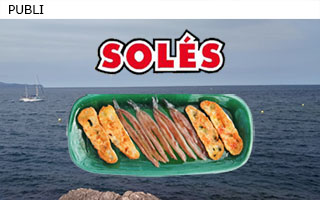discovering.. LLANÇÀ
Within the municipality of Llançà there are numerous forest areas and wide range size & condition beaches: from family beaches with sand or gravel, to very small ones, which one can generally get them on foot.
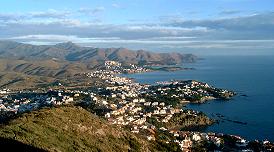
Small coastal site, 15 km from the French-Spanish border, with an active fishing port and a new yacht harbour..
Llançà consists of Llançà village and the Port de Llançà. Llançà, the older village, has a number of historical buildings surrounding the plaza major. The port is newer, having been developed only in the course of this century. Until after the civil war the fishermen of Llançà lived only in the village and used the port only for their work. Port and village together have approx. 4,000 inhabitants.
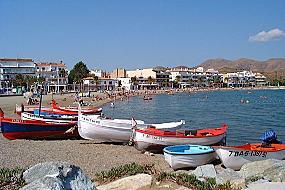 Within the district of Llançà there are numerous green areas as well as beaches of varying size and condition: from family beaches with sand or gravel to the smallest bays which can usually only be reached on foot or by boat. During the holiday period the number of inhabitants increases until the high season from 1 August to 15 August. Nevertheless, one can describe Llançà as a fairly quiet and peaceful resort.
Within the district of Llançà there are numerous green areas as well as beaches of varying size and condition: from family beaches with sand or gravel to the smallest bays which can usually only be reached on foot or by boat. During the holiday period the number of inhabitants increases until the high season from 1 August to 15 August. Nevertheless, one can describe Llançà as a fairly quiet and peaceful resort.
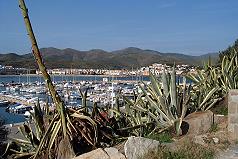
A short historical outline of Llançà:
- 974, first mention of Llançà in documents as mansion Lancio.
- In the XVII Century frequently visited by pirates.
- 1691 the port chapel Mare de Deu was built
- June, 1726 the last pirate ship was sighted in the bay of Llançà
- 1759 the current Spain-France border in the Pyrenees was determined
- In the XVIII century an economic boom in the production and export of wine and olive oil
- Beginning of the XVIII Century a few houses were built in the port of Llançà. Up to the 20 century only about 200 people lived in the port.
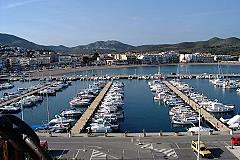 In the XIX century the wine bug [phylloxera] destroyed the wine harvest and ended the area’s successful wine economy.
In the XIX century the wine bug [phylloxera] destroyed the wine harvest and ended the area’s successful wine economy.- In 1870 the tree of liberty in the middle of the current plaza major was planted.
- 1887 the first train reaches Llançà
- 1909 and 1913 road improvements to Colera and Vilajuïga
The sports port of Llançà offers anchoring for boats up to 12 m. There is a sufficient number of anchorages to rent and for the transit.
Sport facilities are available for cyclists, tennis and all types of water sports.
Infrastructure:
Accommodation in family hotels, pensions or in holiday houses and flats. The houses and flats are mostly rented out through local agencies or privately.
Numerous restaurants, specializing in local seafood, in all price categories are open year round.
Most visitors come from within Catalonia or from France, Belgium and Germany.
Smaller numbers of visitors are from Switzerland, Italy and Russia. 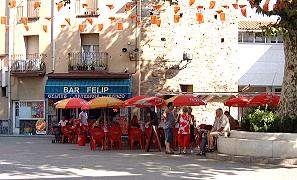 The night life (discotheques and pubs) is good in the summer months without an excessive noise level. Public security is excellent. Coastal resorts and the countryside can be reached comfortably and quickly by car. Train connection to Figueres in 25 min, Girona and Barcelona to the south, and France to the north. Bus connections are available to Port de la Selva, Roses, Empuriabrava and Cadaqués.
The night life (discotheques and pubs) is good in the summer months without an excessive noise level. Public security is excellent. Coastal resorts and the countryside can be reached comfortably and quickly by car. Train connection to Figueres in 25 min, Girona and Barcelona to the south, and France to the north. Bus connections are available to Port de la Selva, Roses, Empuriabrava and Cadaqués.
————————————————————————————–
Pictures from Llançà
————————————————————————————–

